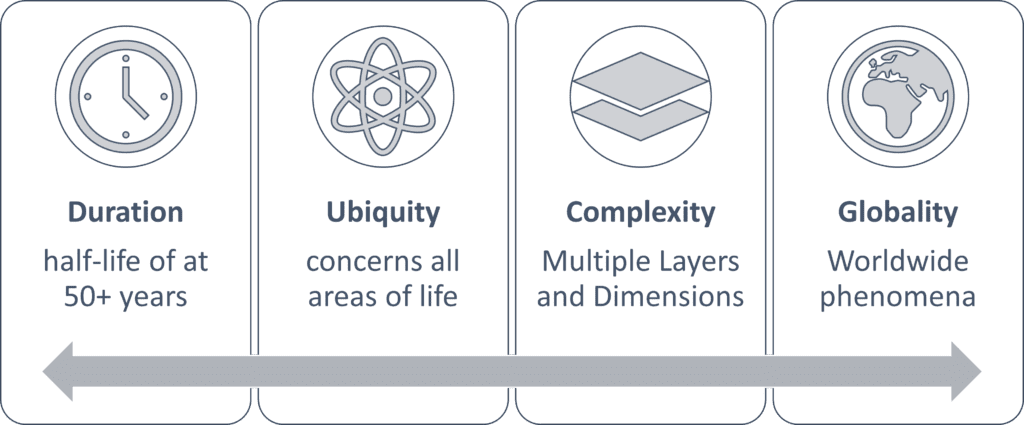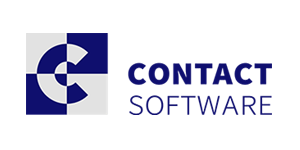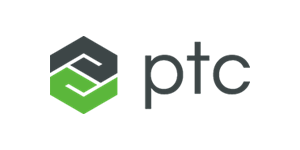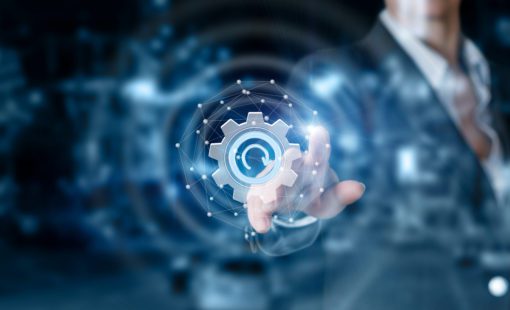The whole world is buzzing about the digital transformation. Without a doubt, a megatrend – right? Many emerging phenomena are proclaimed to be megatrends by different sources. At times with good reason, at other times inflated by a hype created by industrial marketing departments. And when you take a closer look, they are at best a regular trend, but by no means a megatrend. So what distinguishes a megatrend from just a trend?
Trends are topics that capture our attention, novelties that intrigue and inspire. They usually last for a few years before disappearing from the scene one by one or being eclipsed by the next big thing. Megatrends, on the other hand, are defined as trends that have an extended lifecycle (some sources talk about a half-life of at least 50 years!). They pervade all areas of life and they can turn entire industries upside down. In other words: Megatrends are the biggest drivers of change in the economy and society and they shape our everyday lives and our future. Not only in the short term but in the medium to long term.

Connectivity versus Mindfulness
Megatrends can sometimes experience upwind and downwind in an interplay. New technologies can elevate them. On the other hand, emerging counter-trends can hold down their ascent. Let’s take connectivity as an example. In industrial contexts, it refers to connecting machines with their digital twins and sharing information in the cloud.
In our personal lives, connectivity allows us to stay connected to friends and family anywhere, anytime thanks to 5G technology. According to statistics we look at the screen of our smartphone 88 times a day on average. And in 53 cases this triggers an action. You could say that mindfulness is emerging as a corresponding counter-trend in our everyday lives. In order to escape the overwhelming pressure of constant availability, we consciously switch off our phones more frequently. Perhaps we even wish for a camping weekend in the woods, far away from network coverage.
Sustaining a company’s ability to innovate
While it may still be acceptable to miss one or two trends, those who ignore the megatrends of their industry – consciously or unconsciously – risk losing their competitive edge in the future. The challenge in responding to megatrends is, first of all, to recognize their origins and underlying issues and, ultimately, to transform these insights into product innovations.
In doing so, companies have to develop their ability to innovate in ever shorter cycles. The innovation capability of organizations is a manifold construct and comprises competencies in problem identification, idea generation, research and development activities, and also market launch.
Innovation is clearly not a process that takes place in a single department, but rather in cross-functional development teams. Product innovations today require the collaboration of many different engineering disciplines and specialists to meet the requirements of the users. This interdisciplinary collaboration requires continuous synchronization of configurations and versions of data between all engineering disciplines.
The ability to innovate is therefore built up from the interaction of different areas and disciplines. With our engineering software for electronics and electrical engineering, Zuken is committed to supporting the free exchange of data and information with other departments and enterprises, beginning from, but not limited to mechanical and software design environments. This allows engineers to collaborate with such diverse departments as marketing, procurement, and global manufacturing sites in a seamlessly connected design ecosystem and communicate changes at any point in the process.
A supply chain of innovators
At Zuken, we do not believe in one monolithic IT approach valid for all engineering fields. Instead, we believe in a design ecosystem that is made up of best-in-class solutions. Composed of different vendors, such an ecosystem has the distinct advantage that each vendor can focus his expertise to become the leading innovator in his field, continuously improving and developing his tools.
Inevitably, this ecosystem will change over time, renewing and adding emerging technology. It is much easier to replace just one element than a complete system into which millions of dollars have been invested. However, such changes are not only inevitable but even desirable in some cases, because a standstill is synonymous with falling behind and losing the ability to respond not only to megatrends but also to emerging short-term trends. In this context, our open interfaces are an extremely valuable advantage that helps companies to react flexibly to any changes that may occur in the future.
The object-oriented architecture of our software solutions is based on industry standards. Consequently, they are perfectly suited for an integration into existing PDM/PLM and ERP environments. This way, a true electromechanical data model with complete transparency of electrical and electronic designs down to component level can become a reality.
An ecosystem of trusted partners
Just like the changing trend map, the ability to innovate is not a static structure, not a one-time achievement. It is a competence that must be proven time and time again. To help our customers build a forward-thinking system landscape, the focus at Zuken is on establishing alliances and partnerships.
Zuken works with many strategic partners covering a variety of industries and solutions:
- Industry-leading ERP platforms
- PLM and data management solutions
- All major mechanical design tools
- Automation solutions like PLC configurators or terminal configurators
- High-tech production solutions such as automated drilling and milling machines, machines for processing cables and cable harnesses, and many more.
At Zuken, we’re constantly developing new ways to connect across disciplines. We look forward to hearing from you about how you want to grow your design ecosystem.
Watch our recent integration webinars:

- Webinar
Zuken supports a best-in-class approach to enable a flexible digitalization strategy. In this presentation we will provide an introduction of Zuken's PDM and PLM integration strategy and an overview of certified process integrations with leading PDM environments.

- Pages







